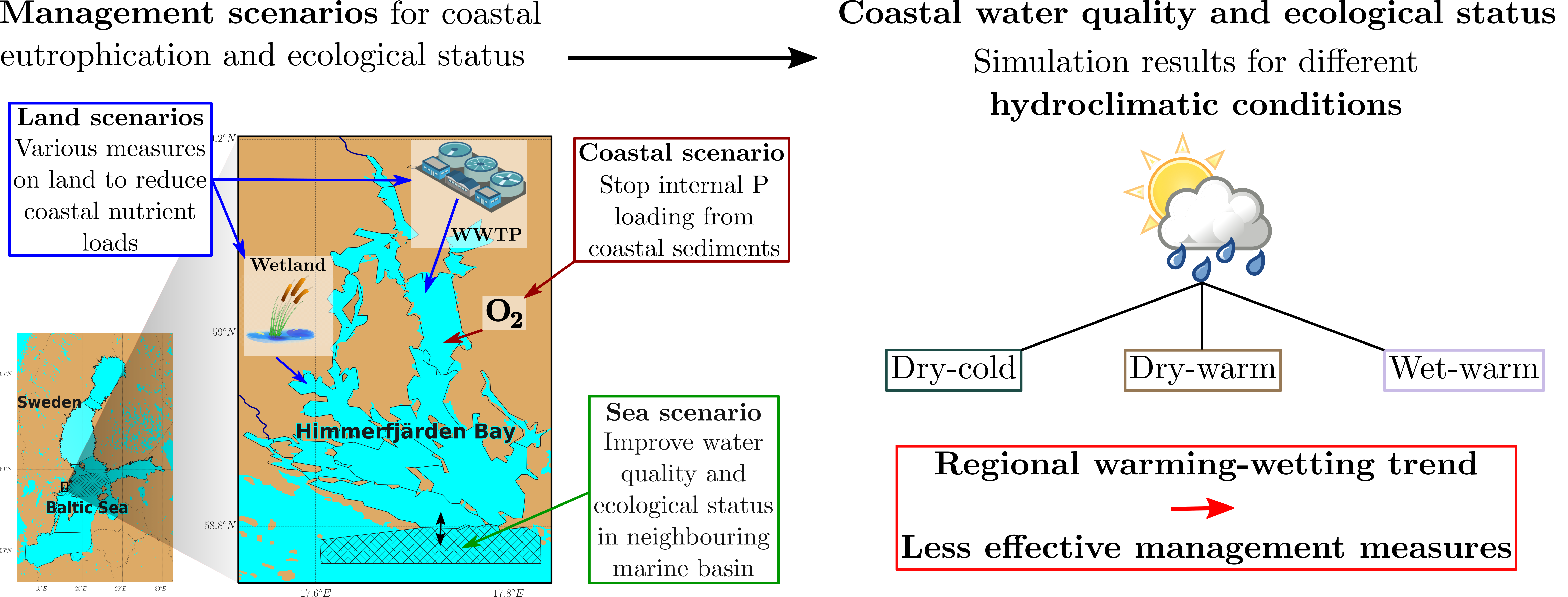Abstract
Coastal eutrophication is a common problem worldwide, with main drivers including land-based freshwater and nutrient discharges, as well as hydroclimatic and open sea conditions. This study investigates the combined effects of different hydroclimatic and eutrophication management scenarios on coastal water quality and ecological status. As a case study, we consider and simulate these scenarios for the Himmerfjärden Bay, situated in the semi-enclosed Baltic Sea. Effects on different eutrophication-relevant variables are assessed for several potential land, coast and/or sea-based management scenarios under different hydroclimatic conditions spanning the range of recent past observations.
Our results show that the land and sea-based management scenarios have different effects on each of the studied eutrophication-relevant coastal variables. In general, management strategies need to target both nitrogen and phosphorus reduction for robust coastal effects. We find hydroclimate as a key non-human eutrophication driver, which can substantially counteract management effectiveness. For hydroclimatic conditions close to the recently experienced average, various management measures can improve water quality and ecosystem status in the studied local Baltic coast. Under projected climate change, however, such improvement will require combined land- and sea-based measures.
Read the full article here: https://doi.org/10.1016/j.ocecoaman.2020.105360

